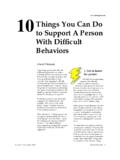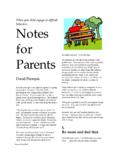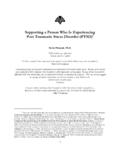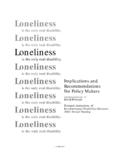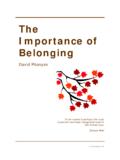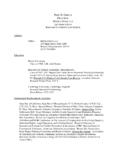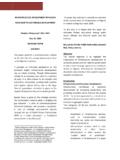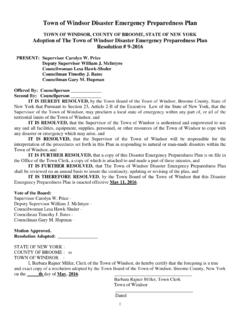Transcription of Discovery - imagine
1 David Pitonyak - 1 Home address: Date of birth: Today s Date: Person (s) completing Workbook: The person s people: Discovery Workbook for _____ Family Friends Paid support Version: 20a October 2009 Portions of the Discovery Workbook were adapted from the work of others: Cyndi Pitonyak, Montgomery County Schools: Supports with Integrity and Imagination (SWIM; functional assessment materials developed by Dr. Tom James of the Region 5 DDD office in Tacoma, Washington; questions from Al Vecchione s Building Emotional Alliances; Martha Leary s Social Dictionary; John O Brien and Connie Lyle-O Brien s Framework for Accomplishments; Michael Smull and Susie Harrison s Support Plan form; Michael Smull s relationship wheel and Steven G. Zelenski s chapter on the use of medications in the AAMR book, Crisis: Prevention and Response in the Community. Many thanks to each for their permission to use the material here. David Pitonyak - 2 David Pitonyak - 3 Discovery Worksheet What do you most like about the person?)
2 What do you most admire about the person? David Pitonyak - 4 Discovery Worksheet Is the person successful at maintaining relationships with friends and family? If not, why? Could this be a contributing factor in his/her difficult behaviors? Use the table on the next page to describe the qualities and characteristics of the person s team. What do you notice? Have efforts to help the person develop new relationships been successful? If so, describe what has worked. If not, consider Linda Stengle s problem-solving questions on page. What did you find? Loneliness is the only real disability Beth Mount David Pitonyak - 5 Discovery Worksheet Qualities and characteristics of the person s team: Yes/No Qualities/Characteristics of Care givers? Comment Presume the person is competent Treat the person with dignity and respect Presume the person needs to have an active role in the development of the plan Like and value the person React according to the plan Eliminate any threat (reduce arousal) Listen actively and agree whenever possible Acknowledge emotions, needs, desires, competence and authority Express views without provoking Go from you and me, to we.
3 Offer choices. Accept criticism Are realistic about what constitutes success Help the person to clean up the emotional and instru-mental mess without provoking further outbursts Forgive and forget Are real about how they feel but at the right time. *Adapted from Al Vecchione s Building Emotional Alliances which can be found in my handout Upside Down and Inside Out available from my web site: (Click on Articles and Publications). David Pitonyak - 6 Linda Stengle s Problem-Solving Questions Is the relationship between the person and the other per-son unbalanced? What can you do to help resolve the issue? Be spedicfic Are there too few mutual interests? Is this an activity you really want the person to do, or is it something you want him/her to do? Is the activity long enough to encourage the develop-ment of a relationship Is the other person afraid to get close to the person? Is the other person too busy to take time to get to know the person?
4 Are needed accommodations available to allow the per-son to participate in the activity? Could your presence be interfering with the development of friendships? Do the same people tend to participate or are there dif-ferent people there every time? Are there breaks, joint projects, or committees which al-low people time to communicate freely? Is the other person in a relationship with the person out of a sense of duty? Is there enough structure to the activity? Is the person projecting an attitude that is keeping other people away? Do you think something is preventing the other person from appreciating the person s qualities? Adapted from Linda J. Stengle s book, Laying the Foundation For Your Child With A Disabil-ity: How to Establish Relationships that Will Last After You Are New York: Woodbine David Pitonyak - 7 Discovery Worksheet Where does the person currently live? Does he or she live with other people? If so, how many? Does the person enjoy their company?
5 Describe a great day for the person. (What would he or she do? Who would he or she see?) Describe a bad day for the person. (What would he or she do? Who would he or she see?) Morning Afternoon Evening Morning Afternoon Evening David Pitonyak - 8 Discovery Worksheet What are the person s dreams and aspirations? Is there a difference between the person s dreams and aspirations and the life he/she is living? If so, describe the difference here (be specific). David Pitonyak - 9 Discovery Worksheet What is the person s story? Describe major life events and relationships good and bad from the person s birth date until today s date. You can use a narrative form and/or develop a time line (below). Be specific and use extra paper if necessary. Timeline Birthday: _____ Today s date: _____ Who holds your story? David Pitonyak - 10 Discovery Worksheet Does the person have a history of trauma? Traumatic events may include one or more of the following: Check Traumatic Events Separation from primary relationships at an early age.
6 Frequent moves from residential placements Institutionalization Physical abuse Verbal abuse Neglect Degradation Loss of parent, sibling, or significant others Significant medical problems/procedures Automobile accident/ fall (may result in head trauma) Time out, over-correction, physical restraint, facial screening, ammonia or aversive substances History of physical or mechanical restraint Other: Other: List all sources of information: For additional information about the effects of trauma, see my handouts Supporting a Person with Post Traumatic Stress Disorder and Does God Have Enough Hands? available from my web site: (Click on Articles and Publications) David Pitonyak - 11 Discovery Worksheet What is the person s primary means of communication? Be specific ( , uses words, communication board, sign-language, gestures, etc): Using Martha Leary s social dictionary, list things the person might be trying to tell you, how he/she may be say it, and things you can respond and/or help the person resolve the issue: Difficult behaviors can be messages.
7 What ____ may be trying to say Ways he/she may say it Ways you can respond/Resolutions From Martha Leary (2006). Social Dictionary. David Pitonyak - 12 Discovery Worksheet What are the person s labels/diagnoses? List each label/diagnosis in the space below: How does the person feel about these diagnoses? Does the person agree with these diagnoses? Has the person and the person s supporters received information about the various diagnoses and the corresponding treatment regimens? Has this training been helpful? How might it be supplemented or improved? David Pitonyak - 13 Discovery Worksheet Does the person experience a medical condition which requires regular check ups by a medical professional? If so, describe: Does the person exhibit self-injurious behavior? If so, what part of the body does the person hurt? Be precise. For example, if the person slaps his ear, which ear does he slap? If the person s difficult behaviors appeared fairly suddenly, you may wish to consider this helpful acronym: HURTS* H = Head U = Urinary Tract R = Reflux and Other GI factors T = Thyroid S = Seizures Are any of these areas a source of concern?
8 If so, explain. *From Steven J. Zelenski (2002). Evaluation for and Use of Psychopharmacologic treatment in crisis intervention for people with mental retardation and mental illness. In Hanson, , Wieseler, & Lakin, Crisis: Prevention and response in the community. (pp. 243-256). Washington, DC: American Association on Mental Retardation People get immature when they don t feel well Mark Durand David Pitonyak - 14 Discovery Worksheet Medications, Supplements, & Herbal Remedies Medication Dosage (times per day) Original Rx date Condition (s) being treated Most concerning side effects Are these medications/supplements/herbal remedies helpful? If not, why not? David Pitonyak - 15 Discovery Worksheet Are there any issues that put the person and others at risk? Check Issue/Detail Medical concerns (including allergies, medication, sensitivities): Suicide: Aggression: Elopement: Sexual: Fire Starting Legal: Other: Has the person faced legal charges for any of the above?
9 If so, has a judge imposed any legal constraints? Describe. If the person has been adjudicated because of his/her behavior, you may wish to refer to the community safety plan outline developed by the State of Vermont Office of Developmental Disabilities, which is included in the appendices of my paper Upside Down and Inside Out available on my web site: (click on Articles and Publications). David Pitonyak - 16 Grandmother s Law Define up to three of the person s most troubling behaviors, using words your grandmother could un-derstand. Avoid global descriptions of behavior ( , self-injurious behavior or aggression ) using more precise descriptions ( , punches left ear with fist or pulls hair ). List each behavior next to one of the shapes below: If you are concerned about other behaviors, list them below (remember to define them using Grandmother s Law and assign each a new geometric shape): Remember these shapes! Discovery Worksheet David Pitonyak - 17 Discovery Worksheet Things that help/Things that make matters worse People who know the person best say the following things help when upset: People who know the person best say the following things make matters worse: The $500 exercise.
10 An exercise that sometimes helps a team to complete this portion of the Discovery is to ask them to imagine the person having an awful day. Then ask the team to imagine that you would give them $500 if they could help the person to calm. What would they do? Next, imagine the person is having an awful day and you promised them $500 to make matters worse. What would they do? To complete this section, I/we spoke to: David Pitonyak - 18 Today s Date: _____The last time we remember that things were good (date): _____Was there a time when the person exhibited significantly fewer difficult behaviors than now? Using even intervals ( , days, weeks, months, years), use the timeline below to indicate the last time you remember the person doing well. Discovery Worksheet David Pitonyak - 19 Ask, What happened next? Was there a change in important relationships? Did someone important to the person leave? Did someone new arrive? Was there a change in the person s health status or emotional well-being?
